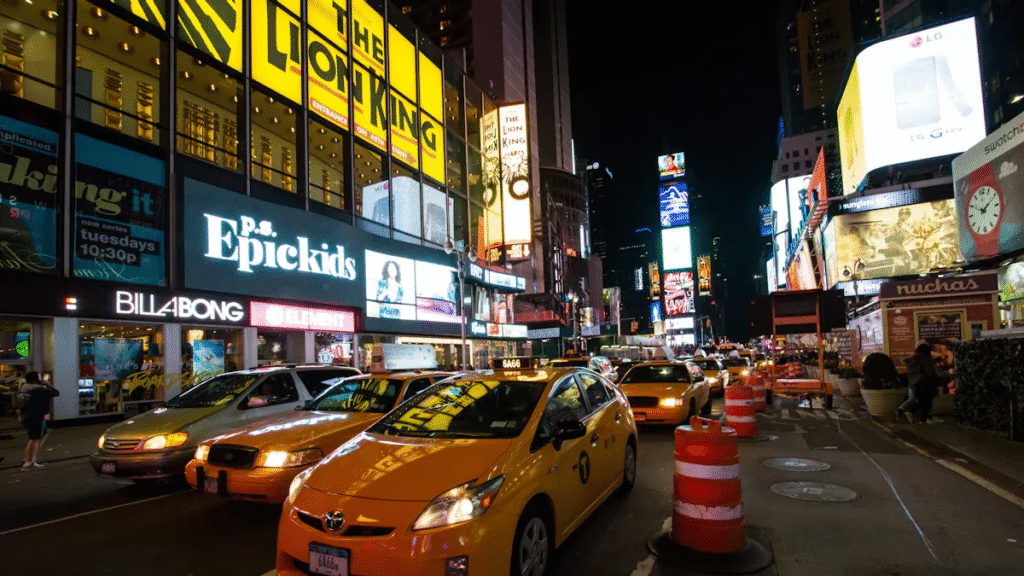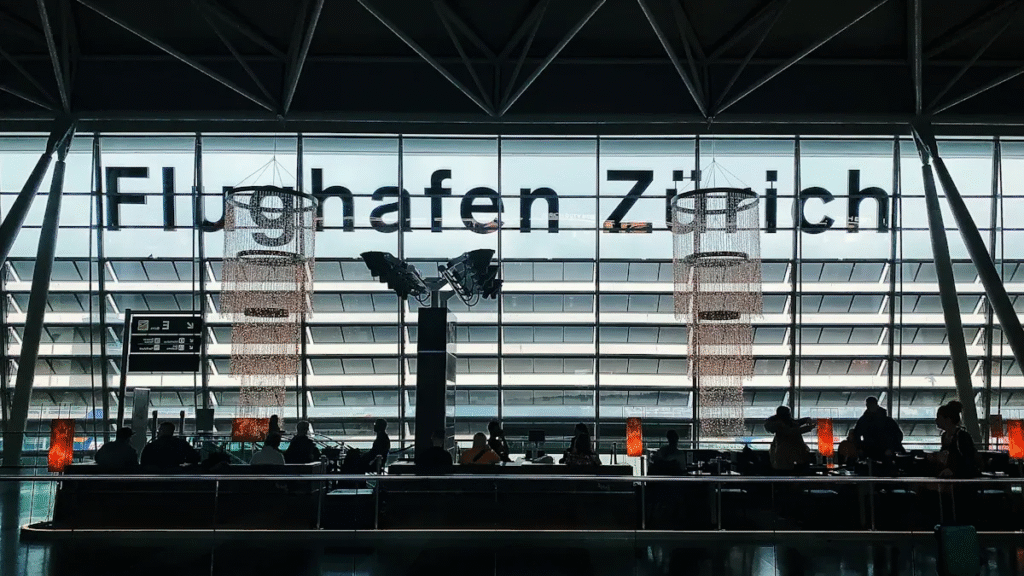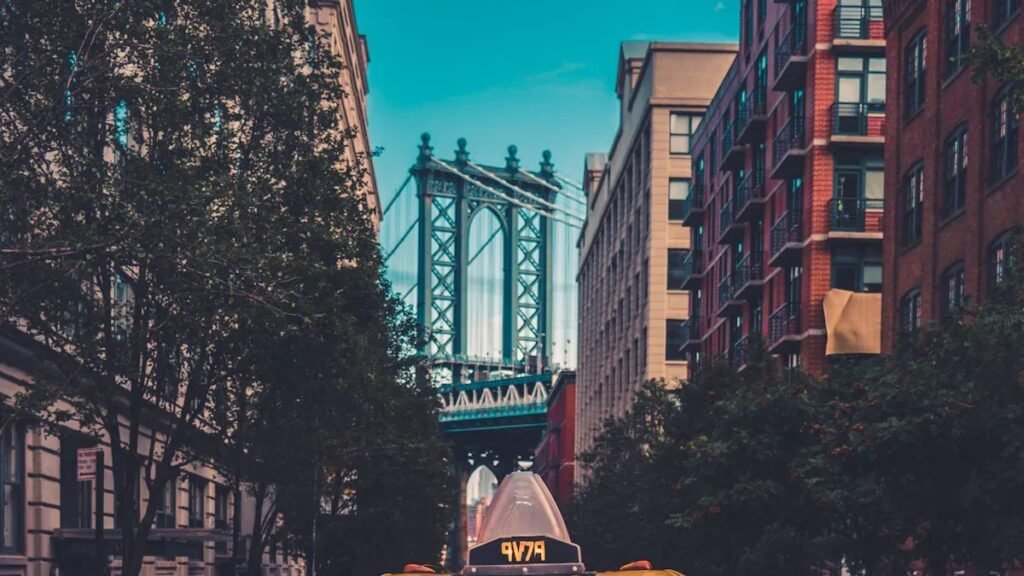You can expect a typical taxi fare of $11–$14 for a ride from Times Square to Central Park in New York City. Current travel guides and fare studies confirm this range, with most trips taking about 4–10 minutes depending on traffic. The standard New York City taxi fare includes an initial charge and a per-mile rate, which matches the cost for this short route. Fares may change slightly due to surcharges or busy periods, but you will usually see prices within this range when traveling in New York City.
Key Takeaways
- Taxi rides from Times Square to Central Park usually cost between $11 and $14 and take about 4 to 10 minutes depending on traffic.
- Taxi fares include a base charge, distance fees, and possible surcharges for night or rush hours, so prices can vary slightly.
- Hail taxis on busy streets by raising your arm and check the meter to ensure correct fare; tipping 15% to 20% is common but optional.
- Subways and buses offer cheaper alternatives with predictable costs and avoid traffic delays, while rideshares may have variable prices.
- Visit Central Park early in the morning or late afternoon for a safer, quieter experience and follow safety tips like using marked paths and staying alert.
Taxi Fare in New York City

Fare Breakdown
When you take a taxi in New York City, you pay a combination of base fare, distance charges, and surcharges. The fare structure is straightforward, but several unique fees can apply depending on the time and route.
- Base Fare: $3.00 during the day. At night (8:00 pm to 6:00 am), the base fare increases to $4.00.
- Per-Mile Rate: $3.51 per mile during the day. At night, the rate is $2.18 per kilometer.
- Waiting/Standby Charge: $42.00 per hour if the taxi waits in traffic or at your request.
- Night Surcharge: $0.50 added to every trip from 8:00 pm to 6:00 am.
- Rush Hour Surcharge: $1.00 added on weekdays from 4:00 pm to 8:00 pm, except holidays.
- New York State Tax Surcharge: $0.50 on every ride.
- Tolls: If your route includes bridges or tunnels, tolls are added to your final fare.
- Tipping: While not mandatory, most riders tip between 15% and 20% of the taxi fare.
Tip: Always check the meter when you enter the taxi. The meter should display the correct base fare for the time of day.
For a typical trip from Times Square to Central Park, you can expect the total taxi fare to fall between $11 and $14. This range reflects the short distance and the standard surcharges that apply in New York City.
Factors Affecting Taxi Fare
Several factors can influence the final cost of your taxi ride in New York City. The most significant are traffic conditions, time of day, and the specific route your driver takes.
A recent analysis of over one million taxi trips in New York City found that trip duration and fare often change based on the month, day, and hour. Traffic congestion during peak commute hours can increase both travel time and the total taxi fare. Morning and evening rush hours, especially between 5 a.m. and 9 p.m., see the highest traffic volumes. These patterns mean you may pay more or spend longer in a taxi if you travel during these times.
Surcharges also play a role. The night surcharge applies from 8:00 pm to 6:00 am, and the rush hour surcharge is in effect on weekdays from 4:00 pm to 8:00 pm. These fees reflect increased demand and compensate drivers for working during busy or less desirable hours. If your route includes bridges or tunnels, tolls will be added to your fare.
Some passengers adjust their travel times or choose different transportation options to avoid higher fares during peak periods. You can save money by traveling outside of rush hours or by planning your trip when traffic is lighter.
Note: The latest fare structure in New York City was updated in December 2022. Always check for current rates before your trip.
Travel Time from Times Square to Central Park

Average Duration
You can expect a taxi ride between Times Square and Central Park to take about 4 to 10 minutes. This short trip covers a distance of roughly one mile. In New York City, taxis move quickly through midtown when streets remain clear. Most drivers know the fastest routes and adjust based on real-time traffic updates.
A typical weekday afternoon sees lighter traffic than the morning rush. If you leave Times Square during midday, you often reach Central Park in under 7 minutes. On weekends, you might notice a slight increase in travel time due to tourists and special events. However, the route remains one of the shortest in New York City.
Tip: Always check a navigation app before you travel. You can see live traffic conditions and estimate your arrival time more accurately.
Peak vs. Off-Peak Hours
Travel times in New York City change throughout the day. During peak hours, you may spend extra time in your taxi. Morning rush hour usually runs from 7:00 am to 9:30 am. Evening rush hour starts around 4:00 pm and ends at 7:00 pm. Streets near Times Square and Central Park become crowded with commuters, delivery trucks, and buses.
The following table shows how travel times can vary:
| Time of Day | Estimated Travel Time |
|---|---|
| Early Morning (6-7am) | 4-6 minutes |
| Morning Rush (7-9:30am) | 8-12 minutes |
| Midday (10am-3pm) | 4-7 minutes |
| Evening Rush (4-7pm) | 8-15 minutes |
| Night (after 8pm) | 4-8 minutes |
If you want to avoid delays, plan your trip outside of peak hours. You will find that New York City taxis move faster and fares stay lower. Off-peak hours offer a smoother ride and a more predictable schedule.
Note: Special events, parades, or construction projects can also affect travel times in New York City. Always allow extra time if you have a tight schedule.
Hailing a Taxi in New York City
Step-by-Step Guide
Hailing a taxi in new york city is a straightforward process, especially in busy areas. You will find the most success in central Manhattan, where almost all street hails occur. Follow these steps to get a ride quickly and safely:
- Stand on the curb of a busy street, facing traffic. Avoid bus stops and crosswalks.
- Look for yellow taxis with their roof light on. A lit roof light means the taxi is available.
- Raise your arm confidently to signal the driver. Make eye contact if possible.
- Wait for the taxi to pull over. Step forward only when the vehicle has stopped completely.
- Check for official markings, such as the medallion number and Taxi and Limousine Commission (TLC) license. This ensures you enter a regulated vehicle.
- Enter the taxi and state your destination clearly.
You will notice that new york city taxis are most available during weekday afternoons, especially from 3 PM to 6 PM. Most passengers hail taxis directly from the street, so knowing where and when to look increases your chances. In outer boroughs, yellow taxis are less common, so you may need to use green Boro Taxis or pre-arranged services.
Tip: Always choose a regulated taxi for safety and consistent pricing. Avoid unmarked vehicles.
Payment and Tipping
Paying for your ride in new york city is convenient. You can use cash, credit card, or even a mobile payment app in most taxis. Studies show that about two-thirds of passengers prefer to pay by card, so you should expect card readers in every vehicle. The fare appears on the meter, and you can review the total before paying.
Tipping is customary, but not required. Data from millions of new york city taxi rides shows that the median tip is around 13% of the fare. Many riders choose to tip 15%, 20%, or even 25%, while others round up the fare or let the driver keep the change. Tipping patterns often reflect your satisfaction with the ride and the speed of the trip.
If you want a seamless experience or need a ride in an area with fewer taxis, consider using KE Transfer. This service offers reliable, pre-arranged transportation throughout new york city.
Taxi or Rideshare Options
Comparing Costs
When you travel between Times Square and Central Park, you often choose between taxi or rideshare services. Each option has unique pricing features that can affect your decision.
- Taxi fares in New York City follow regulated rates. You pay a fixed base fare and a set per-mile charge. This system gives you stable and predictable pricing, but the starting cost is usually higher than rideshare options during off-peak times.
- Rideshare companies like UberX and Lyft use dynamic pricing. Their fares can change based on demand, traffic, and time of day. During busy periods, surge pricing may cause the cost to rise above standard taxi rates. In quieter hours, you might find rideshare fares lower than taxis.
- Many commuters prefer taxis for their reliability and clear pricing. Others choose rideshare for possible savings or convenience, especially when demand is low.
- Both taxi and rideshare services now offer app-based booking. This feature makes it easier for you to compare prices and choose the best option for your trip in New York City.
Tip: Always check both apps before you book. You can compare the current fare and pick the most affordable ride.
Comparing Travel Times
Travel time between Times Square and Central Park stays similar whether you use taxi or rideshare. Both options use the same city streets and face the same traffic conditions in New York City.
| Service | Average Travel Time (minutes) | Notes |
|---|---|---|
| Taxi | 4–10 | Predictable, direct routes |
| Rideshare | 4–10 | May vary with driver availability |
You may notice slight differences during peak hours. Rideshare drivers sometimes take longer to arrive, especially when demand is high. Taxis, especially in central Manhattan, are often nearby and ready to pick you up quickly. Both services offer similar travel times once you are in the vehicle.
If you want the fastest pickup, look for available taxis on busy streets in New York City. For more flexibility, try booking a rideshare through your phone.
Alternatives to Taxi: Subway and Bus
Subway Routes
You can reach Central Park from Times Square quickly by subway. The New York City subway system offers a fast and affordable way to travel between these two iconic locations. You only need to walk a short distance from Times Square to the 59th Street–Columbus Circle station, which sits at the southwest corner of Central Park. The A, B, C, D, and 1 subway lines all stop here. These lines connect you to many must-see attractions around Times Square and Central Park.
- The subway costs just $2.90 per ride, making it much cheaper than a taxi for short trips.
- Trains run every few minutes, so you rarely wait long.
- You avoid traffic jams and unpredictable delays on the street.
Studies show that subways become more cost-effective than taxis as your commuting distance increases, especially in cities like New York City with complex terrain and heavy traffic. Subways do not face road congestion, detours, or steep slopes, so you get a smoother and more reliable ride. Many commuters choose the subway because they feel in control of their trip and can easily reach major attractions. When travel times are similar, the convenience value of taxis drops, making the subway a smart choice for both locals and visitors.
🚇 Tip: Use the subway to visit multiple must-see attractions in one day. You save money and time while exploring iconic sites.
Bus Options
Buses in New York City also connect Times Square and Central Park. You can catch the M7, M10, M20, or M104 buses along major avenues. These routes pass by many attractions around Times Square and continue along the edge of Central Park, giving you a scenic view of the city.
NYC buses use dedicated lanes and real-time passenger information signs to improve speed and reliability. These features help buses avoid traffic and keep you informed about wait times. Research links bus on-time performance to factors like road design and nearby land use, showing that New York City’s transit agencies work to keep buses running on schedule. While buses may move slower than subways during rush hour, they offer a comfortable ride and let you see more of the city’s iconic attractions.
- You pay the same fare as the subway, making buses an affordable option.
- Buses provide easy access to must-see attractions and neighborhoods not served by the subway.
🚌 Note: If you want a relaxed trip between Times Square and Central Park, try the bus. You enjoy city views and reach your destination without the stress of driving.
Practical Tips for Central Park Trips
Best Times to Travel
You can make the most of your visit to Central Park by choosing the right time to explore its iconic attractions. Travel guides recommend early mornings and late afternoons as the best periods for your trip. During these hours, you experience a more peaceful atmosphere and enjoy enhanced safety. Fewer crowds gather at sunrise, so you can take in the must-see attractions without feeling rushed. Late afternoons offer beautiful lighting for photos and a lively yet comfortable environment.
The guide “How Safe Is Central Park?” highlights that early mornings and evenings provide a quieter, more intimate experience. You benefit from increased police patrols, better lighting, and visible security measures during these times. Local community insights also suggest that you stay in well-lit, popular areas to optimize both safety and enjoyment. If you want to see the most iconic attractions around Central Park, plan your trip when the park feels calm and secure.
🕒 Tip: Visit Central Park early in the day or just before sunset for the best mix of serenity, safety, and access to attractions.
Safety Tips
You should always prioritize safety while exploring Central Park and its surrounding attractions. Official agencies like the Central Park Conservancy and NYC DOT have introduced several measures to protect visitors. Follow these guidelines to ensure a safe and enjoyable trip:
- Use clearly marked pedestrian lanes and stay separated from cyclists and faster users.
- Cross at redesigned crosswalks and follow all posted signals.
- Walk through historic archways to minimize conflicts with other park users.
- Pay attention to educational signs and follow instructions from park staff.
- Stick to well-lit paths, especially after dark, and avoid isolated areas.
- Use expanded pedestrian paths to reduce crowding near popular attractions.
- Watch for new safety features, such as raised pedestrian lanes and improved bike crossings.
You will notice that these improvements come from extensive community feedback and official studies. They help you enjoy the iconic attractions around Central Park with greater confidence. Always stay aware of your surroundings and keep your belongings secure, especially near must-see attractions and busy entrances.
🚨 Note: If you travel from Times Square to Central Park, remain alert in crowded areas and use designated crossings for a safer experience.
You have several ways to travel from Times Square to Central Park. Taxis in New York City cost about $11–$14 and take around 10 minutes. You can hail a cab easily, pay by card or cash, and tip your driver. Other options include subway, bus, biking, or walking. The table below compares each choice:
| Travel Option | Cost | Time | Experience |
|---|---|---|---|
| Taxi/Rideshare | $10–$15 | ~10 min | Fast, convenient, higher price |
| Subway | $2.75 | 5–10 min | Quick, affordable, reliable |
| Bus | $2.75 | 15–25 min | Scenic, slower |
| Biking | $3.50+ | 10–15 min | Flexible, eco-friendly |
| Walking | Free | 20–25 min | Healthy, no cost |
Choose the option that fits your schedule and budget. For a smooth trip, consider KE Transfer or another trusted service.



